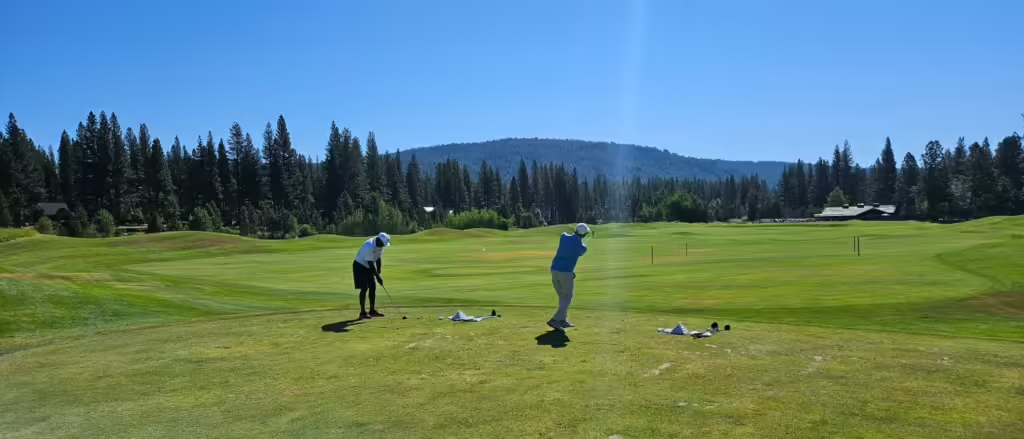
Believe me – when it comes to golf tips … we may not have heard it all, but we sure have heard a lot. Holy moly, we hear the same swing tips over and over from Golfers coming to see us when we ask them “what have you been working on in your swing?”
From “I’m trying to close my stance and put the ball farther back to draw the ball” to “I’m trying to get my swing more flat so that I stop coming over the top on my downswing”.
Now, I understand why Golfers are trying to use these tips … as this is what you hear and see when seeking advice on how to fix your swing maladies. However, just because you’ve heard people talk about these over and over … doesn’t mean they’re the correct things you should be trying in your swing.
For example – does closing your stance and putting the ball farther back help you to draw the ball? If so … why? There’s a theory that’s floating around that says it will allow you to swing more inside out and hit the ball with a club face that’s closed to the swing path — creating the spin necessary to curve the ball to the left.
Yet, in reality – the slicer that tries this may initially start hitting the ball a little straighter … however, he/she usually ends up hitting balls that start even farther right with a bigger slice.
And what makes this even worse is when the Golfer tries to correct the bigger slice he/she just created … they start attempting to roll over their forearms/wrists (to stop the ball going right). But, by adding that, they begin hitting smothered hooks to the left. So now you’re either hitting a blocked slice to the right or a smothered hook to the left … but you never know which is going to happen until it’s too late.
Unfortunately, most Golf Instruction (the tips you hear and read) are just more compensations that you’re adding into your swing to try to cover up your existing compensations. Your golf swing is similar to a machine that may have a broken part … you can wrap the broken part in duct tape to keep it working temporarily. But, sooner … rather than later – that tape is going to stop working.
To fix the machine so that it does what it’s supposed to … you’ll need a mechanic or engineer to get in there to see where the problem started. That mechanic can either try to fix the broken part … or he/she can dig a little deeper to find what caused the part to break.
If you go and just fix the broken part without fixing the cause — it’s only a matter of time before it breaks again and creates additional problems. And along with it … even more frustration.
But that’s how most Golf Instruction is — it’s about fixing the problem with duct tape (closing your stance and/or moving the ball back). And because you’re now adding an additional compensation to your swing … you’re eventually going to need yet another tip such as rolling your arms over at impact to fix the new problem you created.
So, what’s really happening is you’re creating another problem that needs fixing in your attempt to fix a prior problem.
And because you’re now hooking the ball … you’re going to need to add yet another compensation such as staying behind the ball longer at impact. And because you’re now behind the ball – you’ll probably hit the ground before the ball with your irons … so you’ll need to add another compensation such as turning your hips sooner.
Fix a problem using a solution that creates more problems which requires another solution which begets you to finding yet another solution. And before you know it … you’re totally screwed up. Hey … that sounds like both our government and your golf swing!
As opposed to the best way that contributes to long lasting results — finding the true cause of your slice (or whatever you’re trying to fix). Which, when the true cause is diagnosed … it’s usually a much simpler fix than all these other Golf Tips you have been trying to add to your swing.
Because once you’re diagnosed – you then should be taught how to recognize the problem yourself. And when you can start to feel it yourself … you should then be coached on how to correct it in the simplest manner.
Thus, you now own your golf swing – you are the master of your golf swing – you can fix your swing within one or two shots on the golf course. As opposed to the frustrated Golfer that is going to try to find yet another solution by applying another bandage to their already injured swing.
The Inconsistent Golfer is full of tips
The Happy Player is always looking for the cause
Go ahead, be a Player!
Marc Solomon, PGA – Your Instructor For Life



